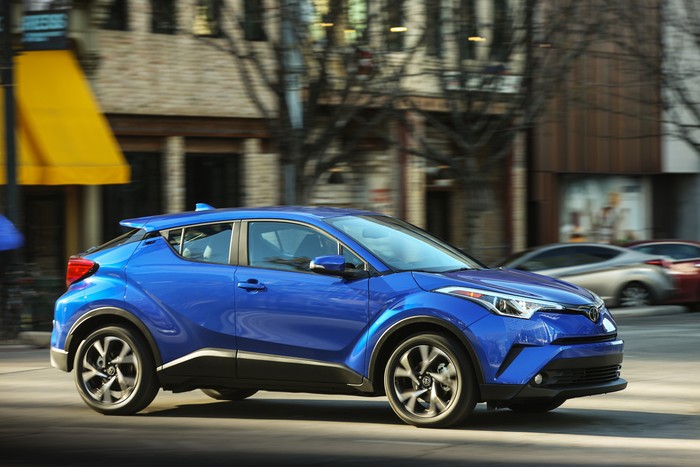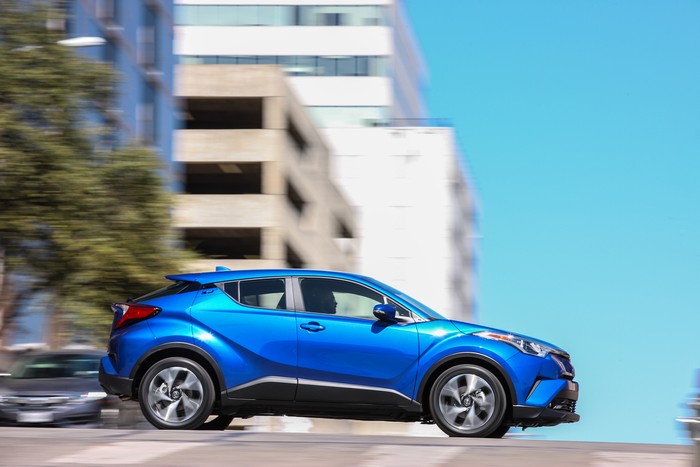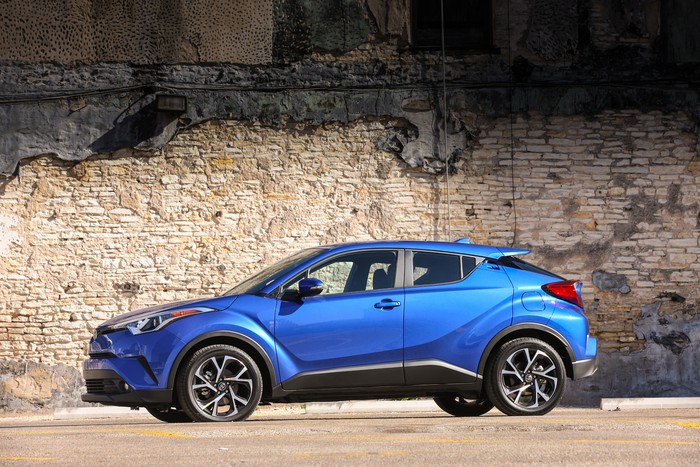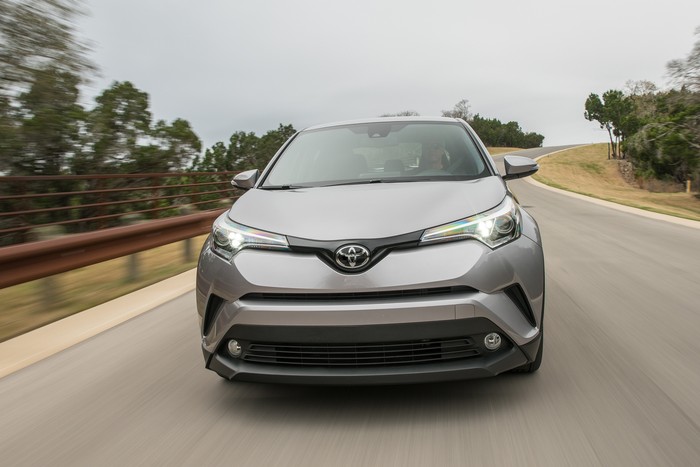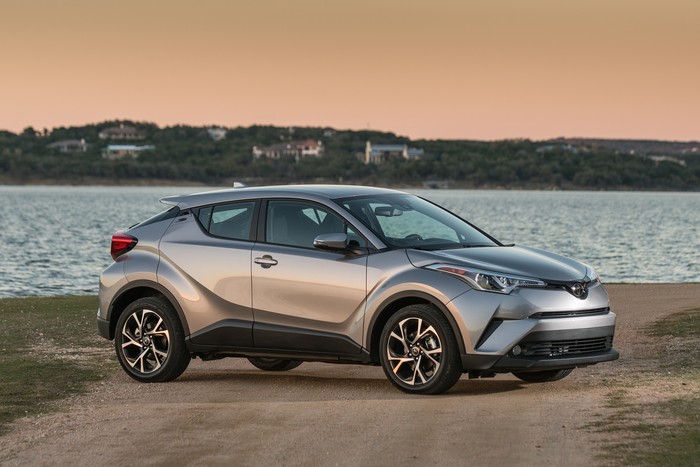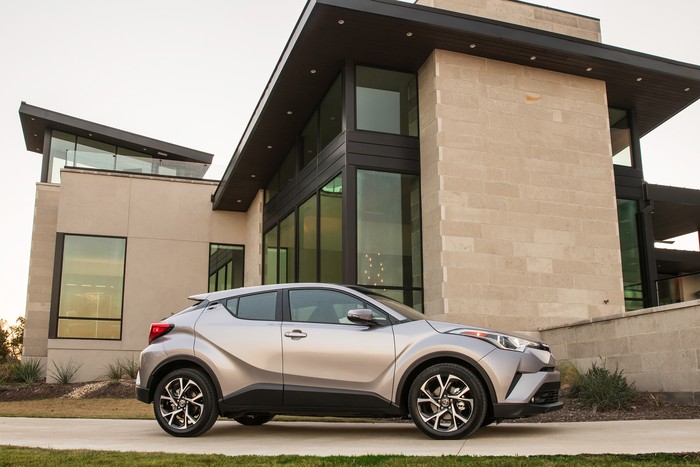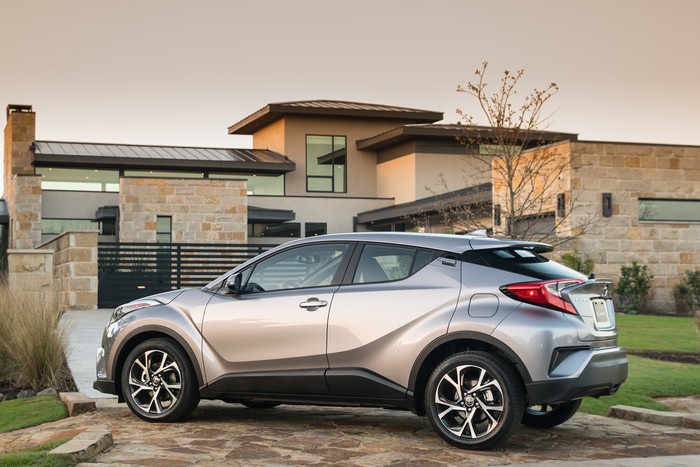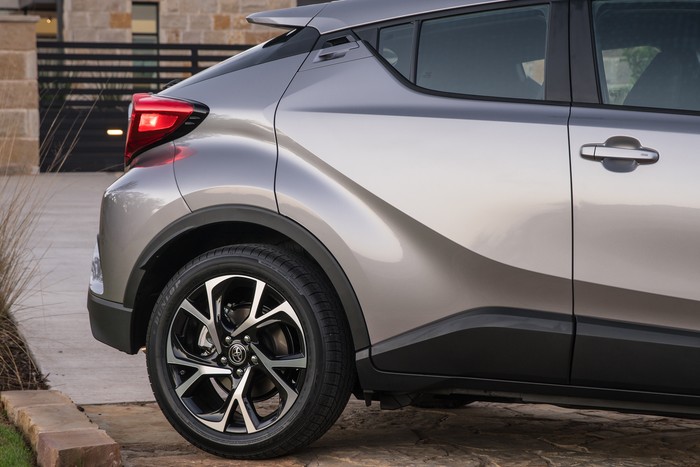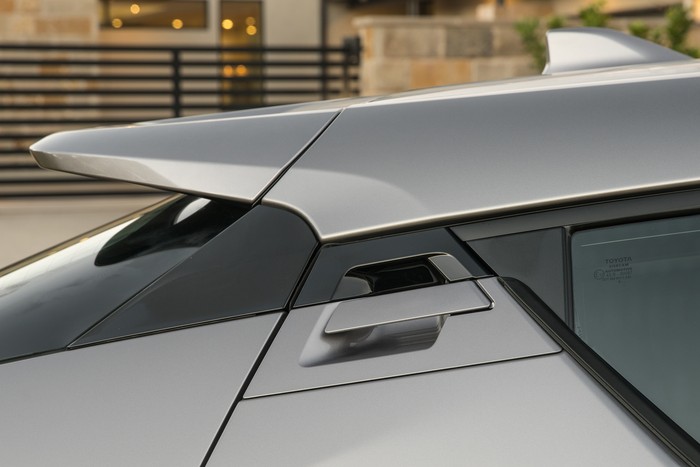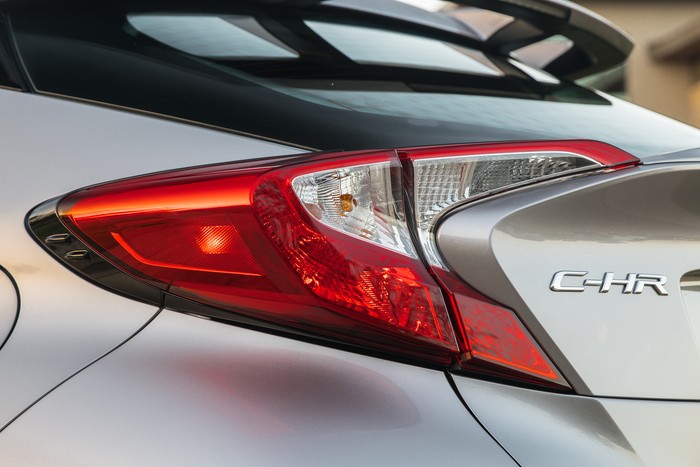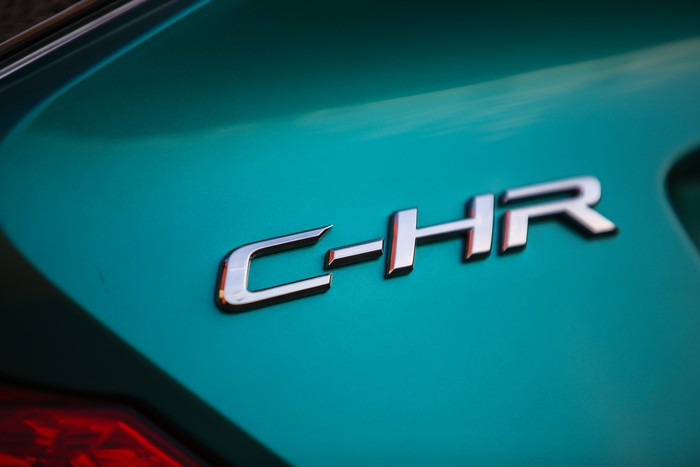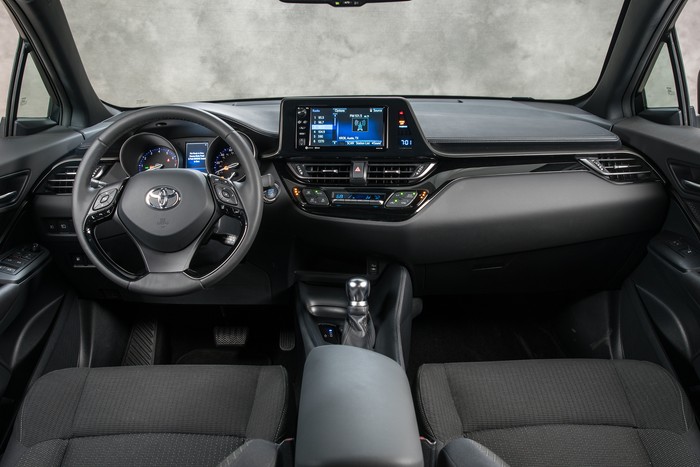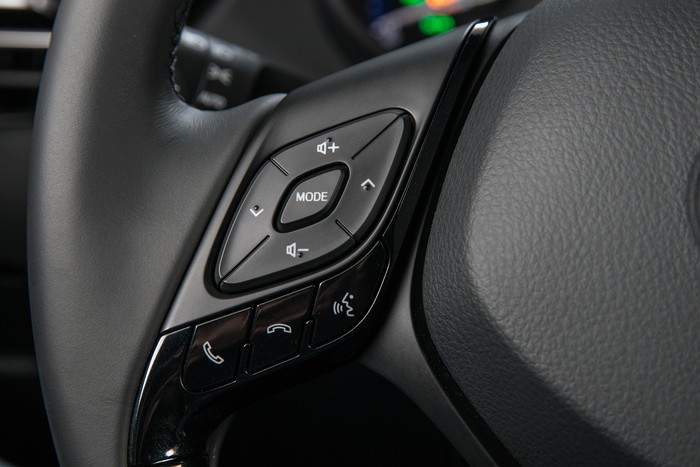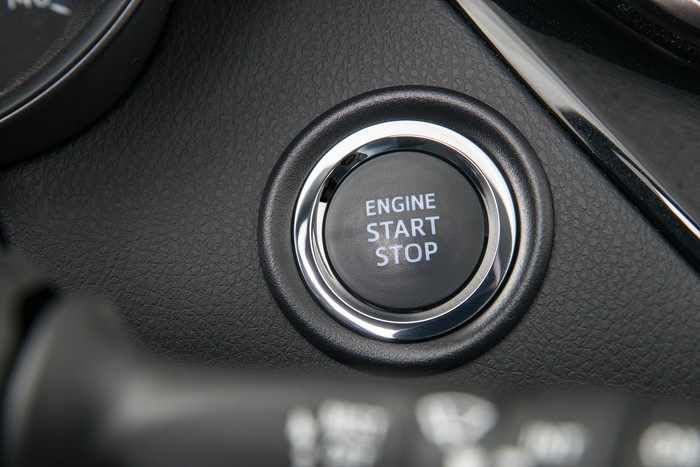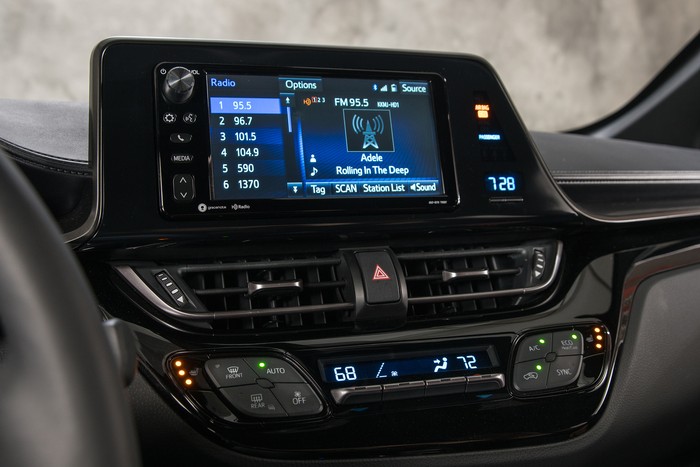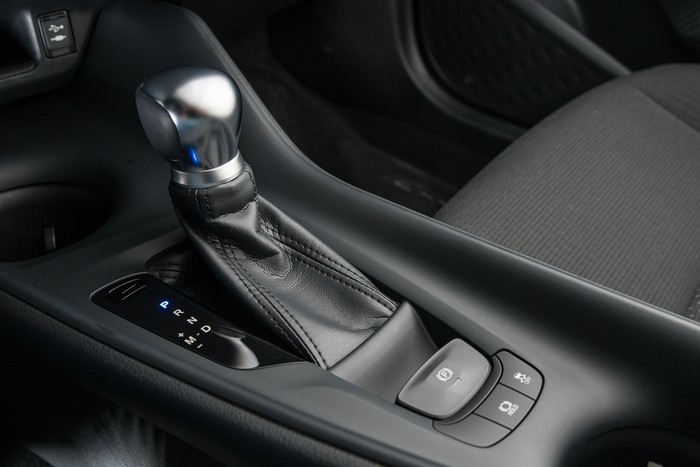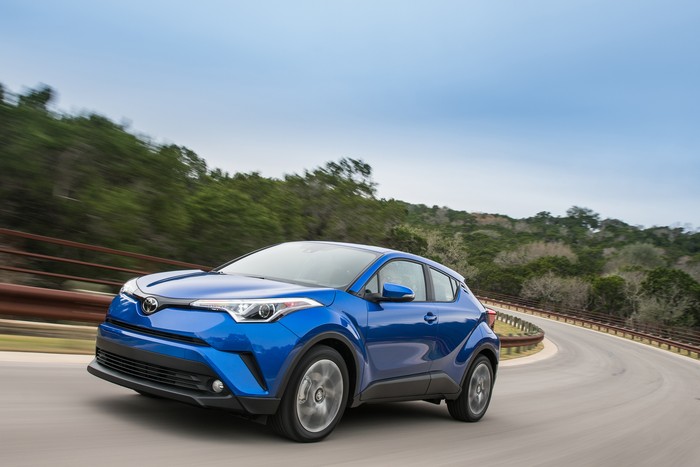
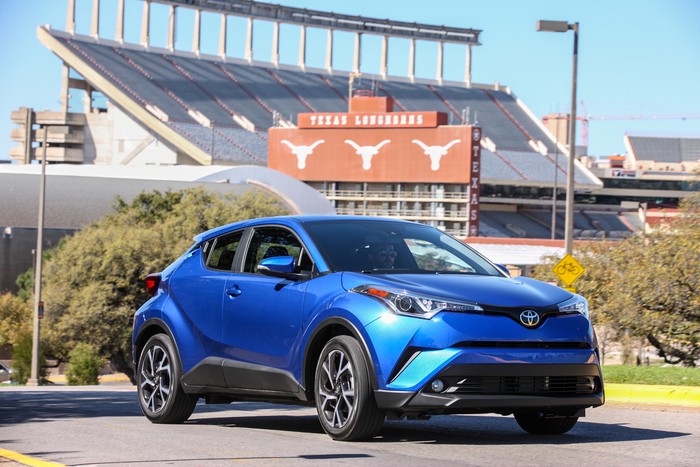
2018 Toyota C-HR
Brand-new for the latest model year, the C-HR is Toyota's entry into the booming sub-compact crossover segment. It boast city-friendly dimensions and standout style designed to appeal to younger buyers.
Overview
The C-HR was born a Scion, and added to the Toyota lineup when the youth-oriented brand was moth-balled. These roots make it a little bit edgier than many of its stablemates.
The small crossover integrates thin windows and a high beltline, while the hatchback tapers inward to further reinforce its streamlined coupe-like profile. Its bold projector headlights and LED daytime running lights wrap nearly all the way into the front quarter panels.
Life Aboard
Inside, there's a modern-looking dashboard with numerous flowing lines that emphasize the car's width. The instrument cluster is an easy-to-read analog unit, and the center stack is dominated by a color touch screen that runs the infotainment system. However, note that the C-HR is not compatible with Android Auto or Apple CarPlay.
Toyota's smallest crossover offers space for five passengers, but the middle seat in the back gets cramped if you try to fit three adults. You'll find 19 cubic feet of trunk space out back, which is a respectable figure for the segment. Folding down the rear seats yields 36.4 cubes.
Trim Level Breakdown
The C-HR lineup is broken down into two trim levels: XLE and XLE Premium.
Highlights from the XLE's list of standard features include a leather-wrapped steering wheel, an auto-dimming rear-view mirror, a rear-view camera, an electronic parking brake, dual-zone climate control, Bluetooth connectivity, and six-way adjustable front seats with cloth upholstery.
Stepping up to the XLE Premium brings a blind spot information system with rear cross traffic alert, heated front seats, eight-way adjustable front seats, and a smart key system.
Several accessories are available, including locks for the alloy wheels, mud flaps, a cargo net, and removable roof bars. However, the only standalone option is a package named R-Code which adds a white roof and white door mirrors.
Under the Hood
At launch, the only engine offered is a naturally-aspirated 2.0-liter four-cylinder. It generates 144 horsepower at 6,100 rpm and 139 pound-feet of torque at 3,900 rpm.
It spins the front wheels via a continuously variable transmission (CVT). Fuel economy checks in at 27 mpg in the city, 31 mpg on the highway, and 29 mpg combined.
Occupant Safety
Every C-HR comes with Toyota Safety Sense P (TSS-P), which bundles a pre-collision system with pedestrian detection, lane departure alert with steering assist, automatic high beams, and dynamic cruise control.
There are also front, side, and curtain airbags, as well as knee and cushion airbags for the driver. Finally, the C-HR offers stability and traction control systems.
Key Competitors
Buyers in the market for a C-HR should also look at the Nissan Juke -- it's the Toyota's closest rival, though it's starting to show its age. Other options include the Honda HR-V, the Mazda CX-3, and even the Jeep Renegade.
